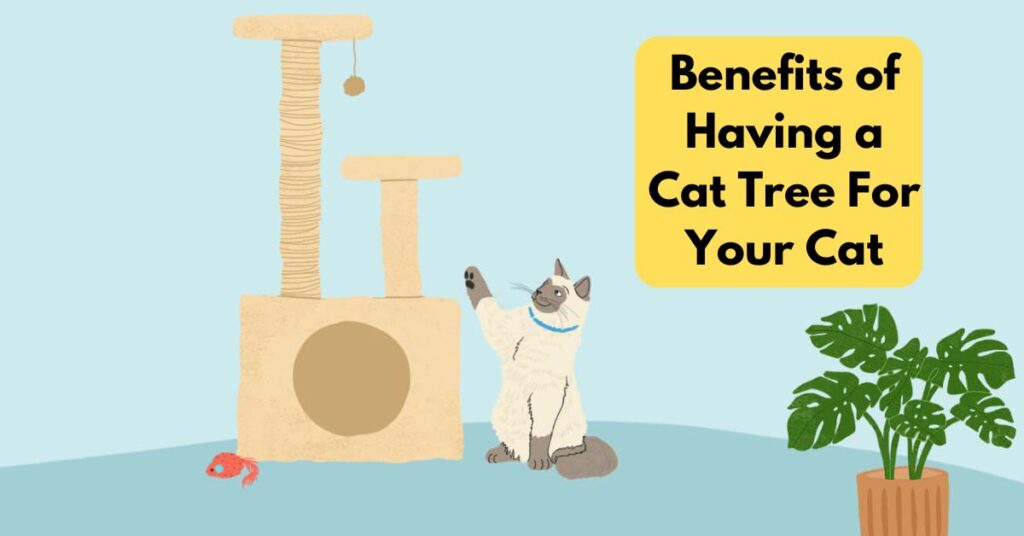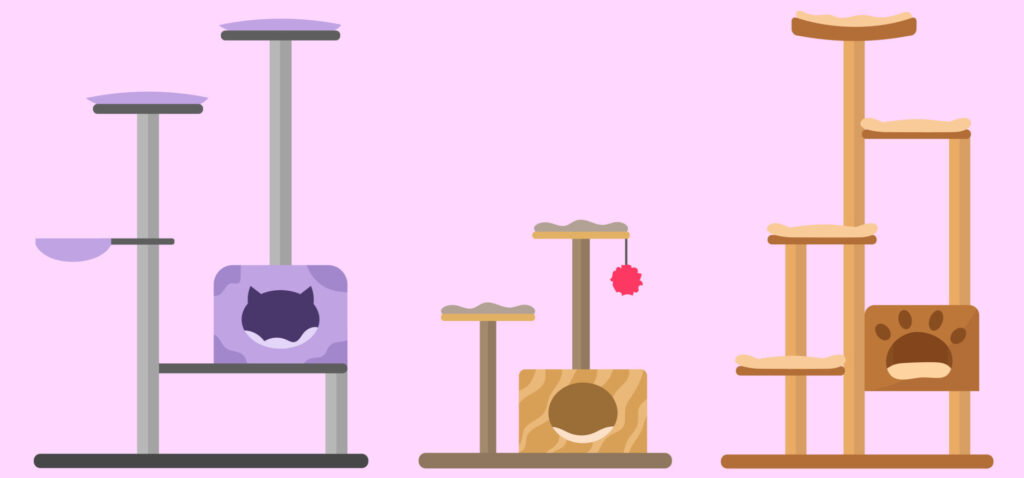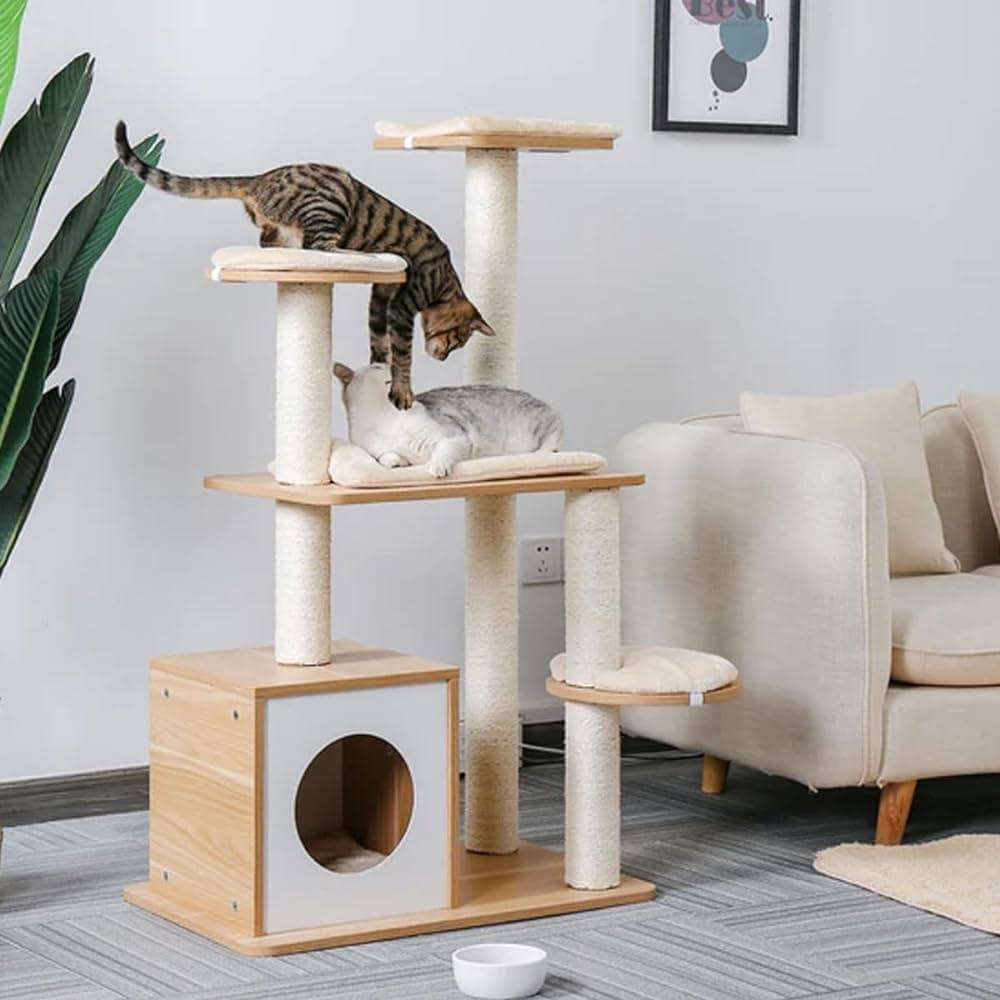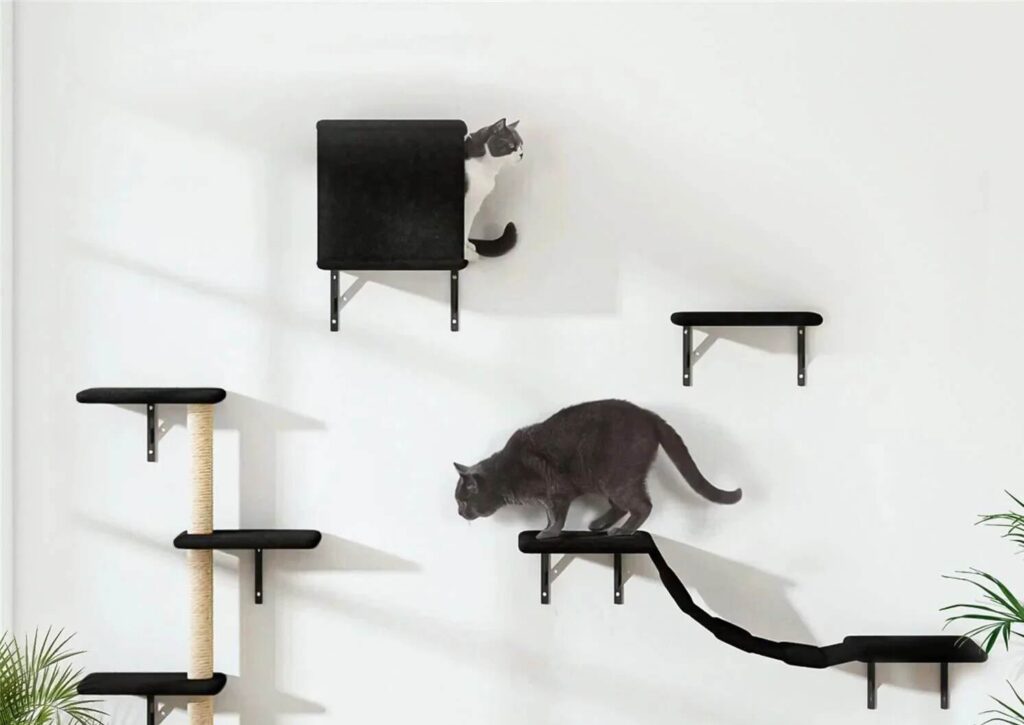
Cat trees are more than just pieces of furniture; they are essential additions to your home that can greatly enrich your cat’s life. Understanding what cat trees are and their benefits is crucial for every cat owner. In this comprehensive guide, we’ll delve into everything you need to know about cat trees, from choosing the right one to maintaining it for years of feline enjoyment.
Table of Contents
What is a Cat Tree?
A cat tree, also known as a cat tower or cat condo, is a multi-level structure designed specifically for cats. It typically features platforms, perches, scratching posts, and sometimes enclosed spaces like cubbies or hideaways. Cat trees come in various sizes and designs, offering cats opportunities for climbing, scratching, lounging, and playing.

Benefits of Cat Trees for Cats and Owners
1. Physical Exercise: Cat trees encourage cats to climb, jump, and explore, providing them with much-needed physical activity.
2. Mental Stimulation: The different levels and features of cat trees stimulate a cat’s curiosity and prevent boredom, reducing destructive behaviors.
3. Safe Space: Cat trees offer cats a designated space where they can retreat, relax, and feel secure, especially in multi-pet households.
4. Scratching Outlet: Cat trees with built-in scratching posts or surfaces help redirect a cat’s natural scratching instincts away from furniture.
5. Vertical Territory: Cats enjoy being up high, and cat trees provide them with vertical space, which is essential for their well-being.
6. Space Optimization: Cat trees utilize vertical space effectively, making them ideal for small homes or apartments.
7. Bonding Opportunities: Interactive cat trees with toys or features like perches near windows create bonding moments between cats and their owners.
Choosing the Right Cat Tree
Selecting the perfect cat tree involves considering several factors to ensure it meets your cat’s needs and fits your space.

Factors to Consider When Buying a Cat Tree
1. Size and Height: Choose a cat tree tall enough for your cat to climb comfortably, with platforms at varying heights for exploration.
2. Materials and Durability: Opt for sturdy materials like wood, sisal rope for scratching posts, and soft fabric for cozy perches.
3. Design and Features:
- Scratching Posts: Ensure the cat tree has ample scratching surfaces to satisfy your cat’s scratching instincts.
- Perches and Platforms: Look for spacious perches or platforms where your cat can rest or survey their surroundings.
- Hideaways or Cubbies: Some cats prefer enclosed spaces for privacy and napping, so consider cat trees with cozy hideaways.
4. Budget-Friendly vs. Premium Options: There are cat trees available for every budget, from simple designs to luxurious cat condos with multiple features.
5. Space Considerations: Measure the area where you plan to place the cat tree to ensure it fits without crowding the space.
Types of Cat Trees
Cat trees come in various styles and configurations to suit different preferences and needs.
Traditional Cat Trees vs. Modern Cat Trees
Traditional cat trees feature classic designs with platforms, scratching posts, and maybe a small hideaway. On the other hand, modern cat trees incorporate innovative features like hammocks, interactive toys, and modular components for customization.
Specialized Cat Trees
- Multiple Cats: Cat trees designed for multiple cats have extra space, multiple perches, and sturdy construction to accommodate several feline companions.
- Kittens vs. Adult Cats: Consider the age and size of your cat when choosing a cat tree. Kittens may prefer smaller trees with ramps or lower platforms, while adult cats may enjoy taller structures with more challenging climbs.
DIY Cat Tree Ideas and Projects
For the creative cat owner, DIY cat tree projects offer customization options and the satisfaction of building a personalized space for your furry friend. Materials like PVC pipes, carpet remnants, and wooden shelves can be repurposed into unique cat tree designs.
Setting Up and Placing Your Cat Tree
Proper placement and setup of your cat tree are crucial for your cat’s safety and enjoyment.
Best Locations for Cat Trees in Your Home
1. Near Windows: Cats love observing outdoor activities, so placing the cat tree near a window provides entertainment and natural light.
2. Quiet Areas: Avoid placing the cat tree in high-traffic areas or near noisy appliances to give your cat a peaceful retreat.
3. Stable Flooring: Ensure the cat tree is placed on stable flooring to prevent wobbling or tipping when your cat climbs or jumps.
Tips for Stabilizing and Securing Cat Trees
- Anchor to Wall: Tall cat trees should be anchored to the wall for added stability, especially if your cat is active or large.
- Use Non-Slip Pads: Place non-slip pads under the base of the cat tree to prevent sliding on smooth surfaces.
- Regular Inspection: Periodically check the stability of the cat tree and tighten screws or fastenings as needed.
Benefits of Cat Trees for Cats
Understanding the specific benefits that cat trees offer can help you appreciate their importance in your cat’s life.
1. Physical Exercise and Mental Stimulation
Cat trees encourage cats to engage in natural behaviors like climbing, jumping, and scratching, which are essential for their physical and mental well-being.
2. Safe Space for Climbing and Scratching
Providing cats with a designated area for climbing and scratching helps protect your furniture and satisfies your cat’s instincts.
Maintaining Your Cat Tree
Regular maintenance is key to ensuring your cat tree remains safe, clean, and enjoyable for your cat.
Cleaning and Sanitizing Cat Trees
1. Vacuum or Brush: Remove loose fur and debris from the cat tree regularly using a vacuum or brush attachment.
2. Spot Cleaning: Clean any stains or spills on the cat tree with a pet-safe cleaner or mild soap and water.
3. Disinfecting: Use pet-safe disinfectants to sanitize the cat tree, especially if multiple cats use it.
Repairing and Replacing Parts
- Scratching Posts: Replace worn-out or shredded scratching posts to maintain their effectiveness.
- Platforms and Perches: Check for signs of wear or damage on platforms and perches and repair or replace them as needed.
- Toy Rotation: Rotate and replace toys attached to the cat tree to keep your cat engaged and prevent boredom.
Cat Tree Safety Tips
Ensuring the safety of your cat on and around the cat tree is paramount.
Avoiding Hazards and Potential Dangers
1. Secure Platforms: Ensure platforms and perches are securely attached to prevent collapses or accidents.
2. Check Stability: Regularly inspect the stability of the cat tree and make adjustments or repairs as necessary.
3. Supervision: Supervise your cat, especially when introducing them to a new cat tree or if they are still learning to navigate it.
Cat Tree Alternatives
While cat trees are popular, there are alternative options to consider based on your cat’s preferences and your space limitations.
1. Wall-Mounted Cat Shelves and Perches

Wall-mounted shelves and perches provide cats with vertical space without taking up floor space, making them ideal for smaller homes.
2. Cat Condos and Play Towers
Cat condos and play towers offer multi-level structures with various features like tunnels, ramps, and interactive toys, providing cats with diverse activities.
Conclusion
Cat trees play a crucial role in providing cats with physical exercise, mental stimulation, and a sense of security. By choosing the right cat tree, maintaining it properly, and ensuring your cat’s safety, you can create a stimulating and enriching environment that enhances your feline friend’s quality of life.
Remember, cat trees are not just furniture; they are investments in your cat’s health and happiness. Incorporate these tips and insights into your cat care routine to create a perfectly delightful space for your beloved companion.
Frequently Asked Questions (FAQs)
Q: How Tall Should a Cat Tree Be?
The height of a cat tree depends on your cat’s size and climbing abilities. Opt for a tree tall enough to provide challenging climbs but not too tall that it becomes unstable.
Q: Can You Customize a Cat Tree?
Yes, many cat trees come with customizable features like interchangeable platforms, detachable toys, and add-on components for personalization.
Q: Do All Cats Like Cat Trees?
While most cats enjoy cat trees, individual preferences vary. Some cats may prefer other forms of vertical space like shelves or window perches.
Q: How Often Should You Replace a Cat Tree?
Replace a cat tree when it shows signs of significant wear, instability, or damage that compromises its safety and functionality.
